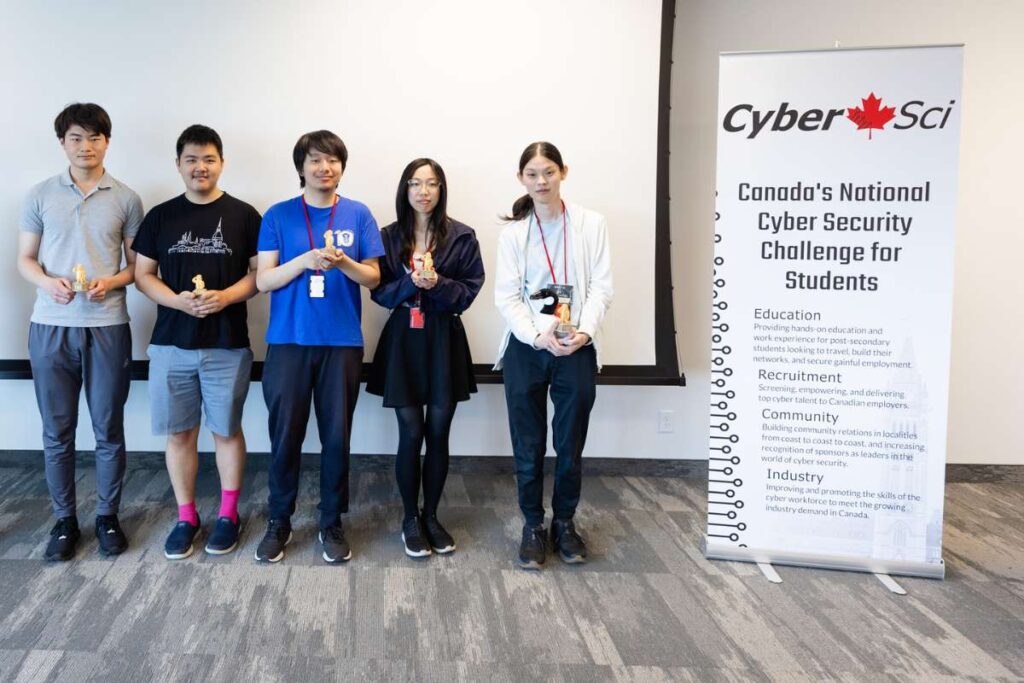Since the start of the epidemic, cybercrime has surged by almost 300%, according to FBI reports. Data breaches can result in reputational harm in addition to monetary losses and interruptions to corporate operations. However, security architecture has not typically placed a strong emphasis on data protection. Cybercriminals steal unprotected data by effortlessly navigating through our robust perimeters. Our focus needs to be redirected towards empowering data to defend itself and almost eliminating cybercrime.
The Business
It’s time for an all-encompassing data loss prevention system that offers defence and security in network environments that are both internal and external.
“We offer straightforward, easy-to-use, reasonably priced DLP solutions that protect sensitive data assets while eschewing pitfalls and filling in the holes left by other cybersecurity solutions.”
Active Cypher fulfils its initial promise of security and protection while simplifying the Data Loss Prevention space. They achieve this by offering integrated, asset-level security and protection along the whole data supply chain, making private information useless to ransomware attackers and transforming possible data breaches from catastrophic events to minor annoyances. Furthermore, Active Cypher gives companies back the ability to effectively manage risk at the individual and organizational levels.
Getting Past the Obstacles
The security industry’s evolution has taken it away from its original purpose. Network security has prioritised safeguarding and monitoring the digital infrastructure over vital data such as intellectual property, personal information, and strategic plans. Regrettably, this emphasis has forced organisations into a reactive state where they can only act to stop dangerous threats once they’ve started.
Direct data protection efforts have been shelved because they burdened end users excessively and were difficult to manage. Rather, the emphasis has been on data loss prevention, which necessitates the creation of service rules, user education, and extremely complicated data categorization—all of which are costly and time-consuming.
The issue with this strategy is that non-technical personnel are left to make judgements about data security, and it is unlikely that they will recognise the value of investing the additional time and energy necessary to properly categorise their files. Furthermore, in data patterns or human behaviours that are known but not dynamic enough to cover unforeseen circumstances, service rules are designed to prevent certain types of data from leaving the organisation.
With Active Cypher, data is prioritised in the security architecture, allowing it to safeguard itself in storage and transmission locations and to keep its privacy intact even after sharing.
“Our clients have expressed a clear need for security to be easy to understand or completely transparent for both administrators and users.”
It must also be flexible enough to fit into any digital architecture, whether
The issue with this strategy is that non-technical personnel are left to make judgements about data security, and it is unlikely that they will recognise the value of investing the additional time and energy necessary to properly categorise their files. Furthermore, in data patterns or human behaviours that are known but not dynamic enough to cover unforeseen circumstances, service rules are designed to prevent certain types of data from leaving the organisation.
With Active Cypher, data is prioritised in the security architecture, allowing it to safeguard itself in storage and transmission locations and to keep its privacy intact even after sharing.
“Our clients have expressed a clear need for security to be easy to understand or completely transparent for both administrators and users.”
It must also be flexible enough to fit into any digital architecture, whether on-premise, cloud, or both.
The Growth Ratio
Organisations are being forced to rigorously examine the return on investment (ROI) of their security architecture due to the increased awareness of cybersecurity risk. A lot of companies have plans in place for digital transformation that involved moving parts of their operations to the cloud. What was originally a 1-4-year strategy was pushed to 6 months via COVID. Company executives were highly concerned about security and needed to quickly increase the capacity for remote work in order to assure company continuity and reduce risk.
Data loss prevention expert Active Cypher specialises in data security and protection at the asset level throughout its lifecycle with significantly less complexity and expense. By allowing data to be self-protected everywhere, even in the event that firewalls and other security mechanisms malfunction, their straightforward and practical method redefines DLP. The perfect setting for Active Cypher Solutions to safeguard the most valuable asset for customers—their data—was created by the quick acceleration of digital transformation occurring across all industries.
The foundation of Active Cypher was the idea that data protection was the main objective of cybersecurity and the target of hackers. Adopting a Data First strategy modifies the way the industry views data loss prevention and streamlines operational emphasis. Furthermore, Microsoft’s robust infrastructure powers 80% of global enterprises, which they used to develop a seamless dynamic Data Protection solution. In 2019, Active Cypher released its prototype into the market. Like most brilliant ideas, theirs was shaped by operational experience in customer contexts, allowing them to address issues of today as well as those of the future.
“Our clientele valued our forward-thinking strategy, but they needed help with immediate problems.”
Their Services and Products
For companies using Microsoft technology, Active Cypher offers full access control, extensive encryption, and threat monitoring/remediation solutions. The group enables businesses to protect their data at the business level against ransomware, hacking, and unintentional disclosure. They achieve this, in contrast to other DLP solutions, by utilising high-level policy frameworks as an alternative to laborious classification or complex service rules. Employees no longer have to jump through hoops to stop the loss or exposure of critical information, allowing them to complete their work effectively.
“Within our clients’ own Microsoft Cloud environments, we encrypt data at the file/object level, granting users view-only access that never exposes source data and enabling businesses to remotely revoke access anywhere, anytime.”
-Active Cypher
Thus, even a data breach does not equate to a loss of data. The data security and protection solutions from Active Cypher safeguard data at the point of creation, when it’s in transit or at rest, in any environment, and throughout email and file-sharing collaboration on any platform.
The only product on the market that delivers on the initial promise of preventing data loss at a fraction of the cost necessary to piece together a comparable degree of protection using other products and techniques is Active Cypher.
The services offered by Active Cypher assist businesses in dynamically securing and protecting data along the whole data supply chain. Because their all-inclusive encryption operates at the file level rather than limiting its protection to data on a particular server, drive, or collaboration platform, it is completely gap-free. Third-party trust is not necessary.
“You maintain complete control and privacy over your data.”
CEO Michael Quinn: Setting the Example
From the obtain vs. protect perspective, Michael’s career in data protection began in the intelligence community. Data has always been the goal, and the modern world has created vast new uncontrolled areas. It was like an electronic Wild West in the late 1970s and early 1980s.
Crucial developments that propelled the field of intelligence from HUMINT (Human Intelligence) to ELINT (Electronic Intelligence) happened so quickly that each technology received a favourable evaluation for its functionality and potential for abuse. The winners discovered that this exploitation was made possible by Zero Day design weaknesses.
That remains the cornerstone of that accomplishment even now. The Internet, VoIP, and DARPA Net research and development alone transformed the security environment. Higher-level security vs. simplicity of use was a conflict between the users and IT/INFOSEC.
When Michael joined Cisco in 1991, he observed that there was a sizable market for Internet-driven data communications and that there was a growing need for enhanced security, which had not been taken into consideration during the first transition to TCP/IP-based solutions. At Cisco, he led a distinct team that was responsible for identifying products and promoting the industry’s adoption of newer, security-required video, file, and voice over IP capabilities.
“My professional journey led me to Microsoft, where I oversaw the Enterprise Cybersecurity Group, with a goal akin to Cisco’s.”
Better minds, nevertheless, continued to ignore the persistent problem of data protection at the file level, which made use of the current technologies and was easy to understand for business, IT, and users.
He became interested in Active Cypher because he believed it was possible to implement a sensible, straightforward approach that would let data secure itself regardless of where it was created, stored, or travelled. This data security strategy has to and can work in contexts with automated controls such as EDR, XDR, and others. The platform from Active Cypher expands the protection offered by all cloud providers while also improving the Microsoft ecosystem.
“I had to take part in this innovative strategy.”
Michael’s Words of Wisdom for Aspiring Business Owners
“The best advice for any business owner is to not be afraid of failure. Experiment a lot, fail fast, and learn from your mistakes by building on the components of the experiment that worked. A new company has to test out several business models as soon as possible. It shouldn’t become mired down in infrastructure until a successful model has been validated. Only then should it concentrate on growing that success.
For ideas that address big business issues, entrepreneurs must leave their desks and engage with customers as much as they can. Those who think they know what the client needs instead of collaborating with them to assess the value of solutions make the largest mistakes in the early stages of a firm.”






